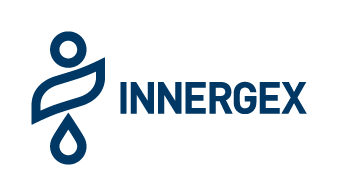Sustainability Reporting Initiative
PLanet > Water
Protecting our most valuable natural resource
Water Use
Maintaining the integrity of water resources is a priority in the environments in which we conduct business activities. As a long-time operator of run-of-river hydro facilities, we are acutely aware of the importance and health of the water systems we work with to generate renewable energy, as well as the limited amounts we consume in our day-to-day activities. Our 40 hydro facilities generate electricity using water in a non-consumptive way, by temporarily diverting a portion of natural stream flows through turbines and then returning it unaffected to the original source (i.e. the same river). Our wind facilities do not consume water in their operation.
Solar facilities general have limited water needs in their cleaning and we have one solar thermal facility in Chile that uses water in a closed loop for heat transfer.
Domestic water consumption is minor in volume and limited to usage at our five offices and at facilities that have washrooms. In 2020, we began accounting for our water use as outlined in the table below.
| 2021 | 2020 | |
| Total water withdrawn1 | 5,280 m3 | 6,161 m3 |
| Total water consumed | 5,280 m3 | 6,161 m3 |
| Number of incidents of non-compliance associated with water quantity and/or quality permits, standards, and regulations.2 | 0 | 0 |
1. Does not include water temporarily diverted for hydro power generation that is returned to its original water source.
2. As defined in SASB reporting framework.
Aquatic Life
Maintaining the integrity of aquatic life at our hydroelectric facilities is something we take very seriously. Throughout Innergex’s history, we have taken great care to address, avoid and mitigate any impacts our facilities may have on aquatic species. We have designed and constructed or improved 11 fish enhancement projects at some of our hydroelectric facilities to offset any impacts that the facilities could have on local fish-bearing water systems. The results of the five-year monitoring programs have found positive results – there were no adverse effects on the local fish communities and, in some instances, the fish abundance increased after five years of hydro operation counter to predictions made during the environmental impact assessment for the project. These projects have proven to be extremely successful at maintaining and even sometimes enhancing fish populations.
Run-of-River Hydro
Run-of-River Hydroelectric facilities generate electricity by using part of natural stream flows and natural elevation differences by diverting a portion of water through an intake structure into a buried pipe (called “penstock”) where it is channeled downstream into one or more turbines in a powerhouse. The natural flow of the water causes the turbine(s) to spin which creates electricity in the generator. The water from the turbine is released, unaffected, back into the natural watercourse.
Our operating run-of-river facilities adhere to strict operational parameters. As a result of the environmental assessment and permitting process, every project must comply with dozens of operational commitments and/or conditions, which are monitored by independent, third-party engineers and compliance officers to ensure a high standard of environmental protection and mitigation. For instance, these commitments include the amount of water that must be left in the stream (the in-stream ecological or aesthetical flow requirement) and consequently, how much water can be diverted, and the rate at which the diversion amounts may be changed to prevent “ramping conditions” that has the potential to harm fish in the stream.
Fish and Wildlife Monitoring Programs
Innergex takes great care in ensuring our impact on terrestrial and aquatic life is mitigated, minimized or avoided at all times. We invest in considerable short and long-term monitoring programs that run during the early development stage (with pre-project baseline surveys) and continue during the operational phase. Before and after data are compared to confirm predictions made during project permitting.
Much of the monitoring is carried out by independent third-party specialist environmental consultants with involvement by our Indigenous partners. For some projects, we have partnered with NGOs or academia by providing the necessary capital and support to conduct multi-year, academic-level monitoring programs. Monitoring results contribute new data and knowledge and have provided valuable research insight in some instances that has greatly added to the industry’s understanding of environmental issues and renewable energy development.
The type of facility, its geographic location, social acceptance and regional regulatory requirements are all considerations taken into account when designing a monitoring program. For example, at our hydroelectric facilities, the programs typically focus on aquatic and terrestrial life, while at a wind farm the focus is on terrestrial and avian species, including birds and bats. In British Columbia, we recognize that mountain ecosystems differ in biodiversity from the more grassland environment of Texas. We understand that every location is unique and requires its own planning and attention.
